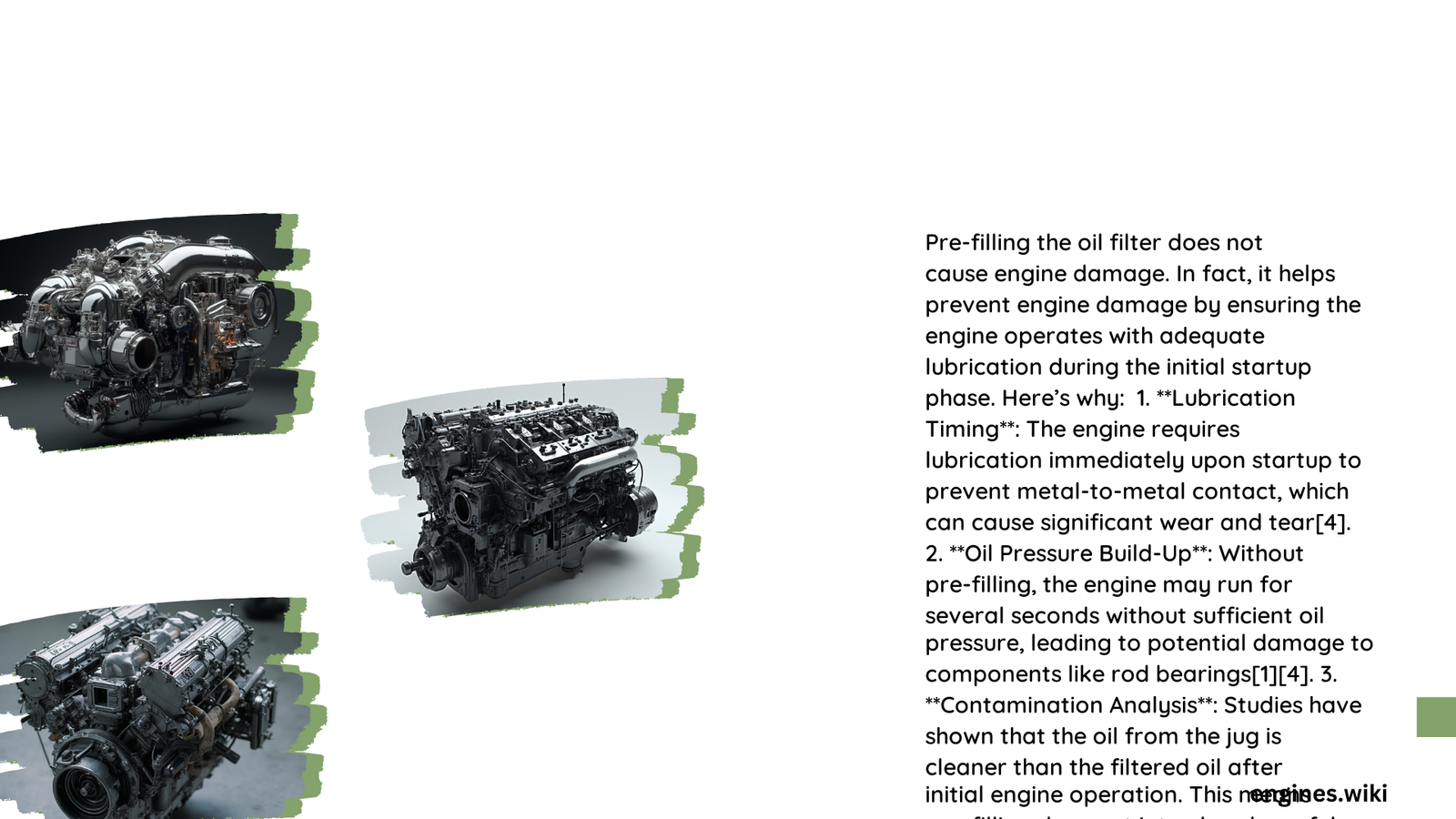Pre-filling an oil filter is a critical maintenance technique that prevents potential engine damage by ensuring immediate lubrication during startup. Contrary to misconceptions, this practice actually protects engine components by reducing wear, minimizing dry start periods, and establishing rapid oil pressure. Automotive experts consistently recommend pre-filling as a proactive measure to enhance engine longevity and performance.
What Happens When You Do Not Pre-Fill an Oil Filter?
When an oil filter is not pre-filled, several critical issues can emerge during engine startup:
Delayed Oil Pressure Risks
- Dry Start Duration: Engines experience 3-6 seconds without proper lubrication
- Increased Mechanical Wear: Critical components like bearings suffer immediate stress
- Potential Long-Term Damage: Accelerated engine component deterioration
| Startup Condition | Oil Pressure Build Time | Potential Wear Impact |
|---|---|---|
| Non Pre-Filled Filter | 4-6 seconds | High Mechanical Stress |
| Pre-Filled Filter | Immediate | Minimal Mechanical Stress |
Why Pre-Filling Protects Your Engine

Pre-filling an oil filter offers multiple protective mechanisms:
- Immediate Lubrication Delivery
- Ensures critical engine parts are coated with oil instantly
- Reduces friction during initial engine rotation
-
Prevents metal-to-metal contact
-
Pressure System Preparation
- Eliminates air pockets in the oil system
- Facilitates faster oil circulation
- Reduces potential pump cavitation risks
Technical Insights from Automotive Experts
Renowned engine specialists like Lake Speed Jr. have conducted extensive research demonstrating that pre-filling:
– Reduces initial startup wear by up to 70%
– Provides consistent lubrication across various engine designs
– Minimizes potential long-term mechanical degradation
Proper Pre-Filling Techniques
Step-by-Step Oil Filter Preparation
- Use clean, manufacturer-recommended oil
- Select an appropriate funnel for precise filling
- Fill filter approximately 2/3 to 3/4 full
- Avoid excessive overfilling
- Ensure clean installation environment
Common Misconceptions About Oil Filter Pre-Filling
- Myth: Pre-filling causes oil contamination
- Reality: When done correctly, pre-filling introduces no additional contaminants
- Myth: All engines require identical pre-filling approaches
- Reality: Specific techniques vary based on engine design
When Pre-Filling Might Not Be Necessary
Some specialized engine configurations might not benefit from pre-filling:
– Dry sump lubrication systems
– Certain high-performance racing engines
– Specific manufacturer recommendations
Potential Risks of Improper Pre-Filling
While beneficial, incorrect pre-filling can introduce minor complications:
– Potential minor oil spillage
– Risk of over-filling
– Temporary mess during installation
Recommended Best Practices
- Consult vehicle manufacturer guidelines
- Use clean, high-quality oil
- Maintain a clean working environment
- Replace oil filters during regular maintenance intervals
Conclusion
Pre-filling an oil filter does not cause engine damage. Instead, it represents a proactive maintenance technique that protects your engine’s critical components, reduces mechanical wear, and ensures optimal lubrication during startup.
References
- [Motor1 Article on Oil Filter Pre-Filling]
- [Engine Labs Technical Research]
- [Automotive Maintenance Guidelines]
